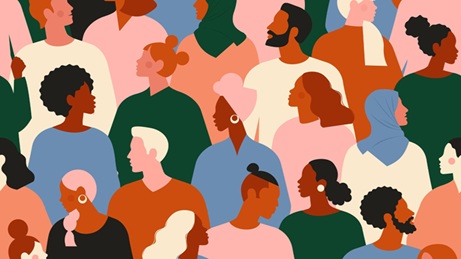| (Mains, General Studies Paper-2: Welfare schemes for vulnerable sections of the population by the Centre and the States and the performance of these schemes; Mechanisms, laws, institutions and bodies constituted for the protection and betterment of these vulnerable sections) |
Context
The Manipur High Court’s order to the State to issue Beyoncé Laishram a fresh educational certificate is not only a matter of individual justice, but also a major commentary on the state of transgender rights.

Recent litigation
- In Dr Laishram’s case, her university refused to update her educational records, citing procedural hurdles.
- In the present case, the university and education boards opined that the correction should start with the certificate first, based on a sequential set of bureaucratic approvals.
- The High Court observed that despite the law being clear on self-identification, bureaucratic systems often do not take action unless compelled by higher authorities.
- The High Court judgment is undoubtedly positive and also sets a precedent that can help other transgender people.
- It signals to administrators that procedural rigours cannot override constitutional and statutory guarantees.
Supreme Court Judgment
- In NALSA vs Union of India, the Supreme Court recognised the right to self-identification of gender and ordered the State to recognise transgender people as socially and educationally backward classes so that they are entitled to welfare measures.
- The Supreme Court has expressed concern over the difficulties faced by transgender and non-binary persons in obtaining official recognition of their gender identity despite the 2014 judgment of the National Legal Services Authority (NALSA) and the Transgender Persons (Protection of Rights) Act, 2019.
- NALSA in a 2014 judgment affirmed the right to self-identification of gender (male, female or third gender) guaranteed under Articles 14, 15, 19 and 21.
- According to the Supreme Court, no recognition can become a ‘punitive process’ that humiliates the applicant.
- The Supreme Court directed the Centre and states to streamline, simplify and centralise gender identity recognition processes.
Steps taken by the government
- The Supreme Court’s principle was codified in the Transgender Persons (Protection of Rights) Act, 2019, which mandated authorities to recognise and issue official documents of a person’s self-identified gender.
- In consonance with Articles 14 and 21 of the Constitution, transgenders are entitled to uninterrupted recognition of their affirmed identity in all institutional records.
Related Issues
- Bureaucratic hurdles
- Requirement of multiple documents and medical certificates
- Complex state-level processes
- Lack of uniformity across authorities
Impact
- Rights violations: Denial of simple and dignified recognition violates fundamental rights and promotes stigma.
- Social exclusion: Without proper documentation, access to healthcare, education, jobs and welfare schemes is limited.
Solutions
- Self-declaration model: Adopt an affidavit-based, single-window system
- Uniform guidelines: Harmonisation across states to avoid arbitrary practices
- Awareness and training: Sensitise officials to handle applications with dignity
- Digital integration: Online updates in Aadhaar, passport and educational records to minimise harassment
Way forward
- Legal recognition of gender identity is not a concession but a fundamental right. Unless this process is made accessible and respectful, the constitutional promises of equality and freedom will remain unfulfilled.
- Bridging the gap between legal rights and their implementation will require both institutional reforms and cultural change within bureaucracies based on understanding gender as a lived reality.



